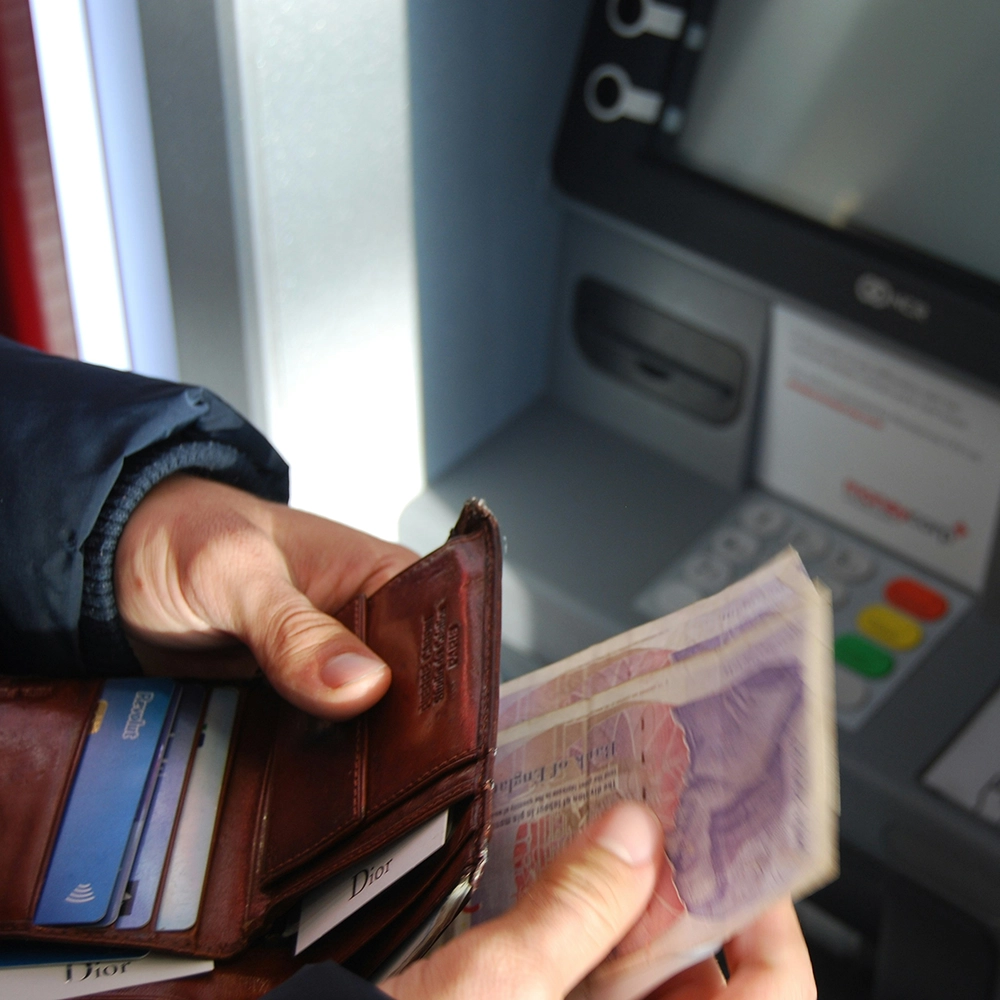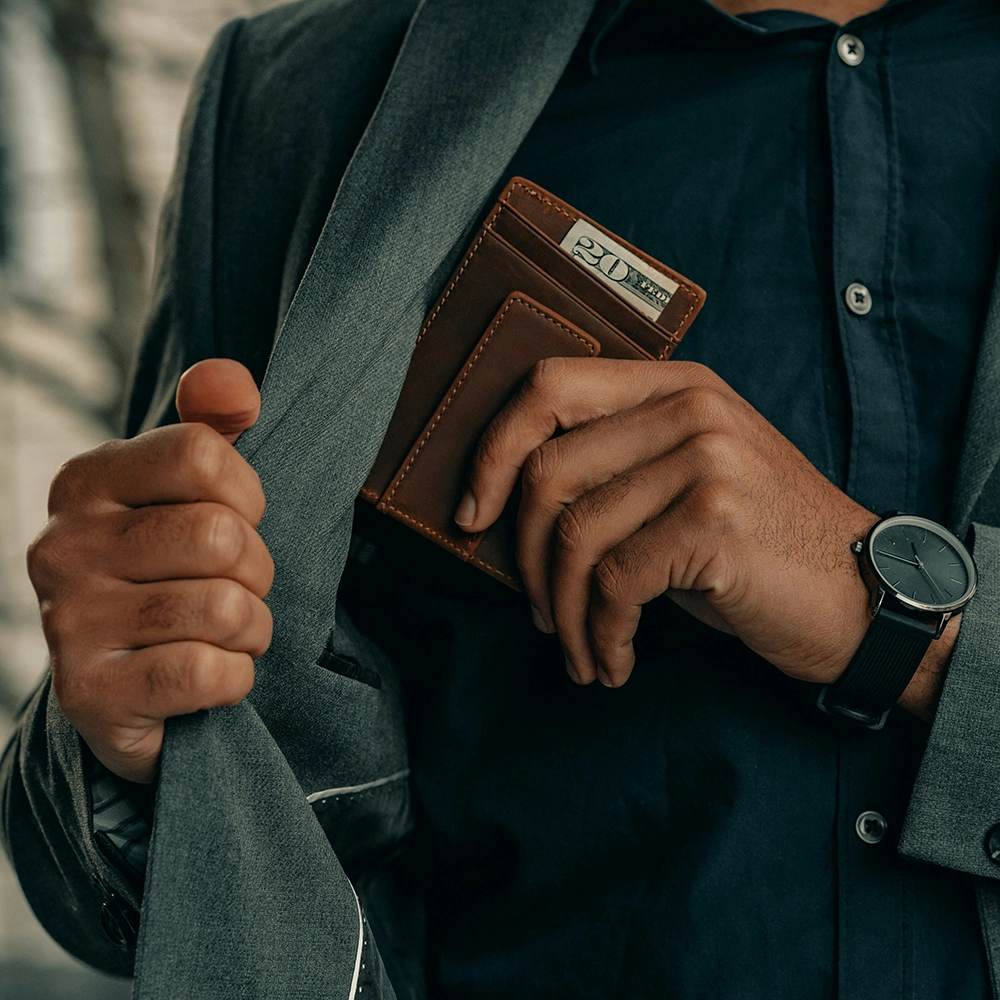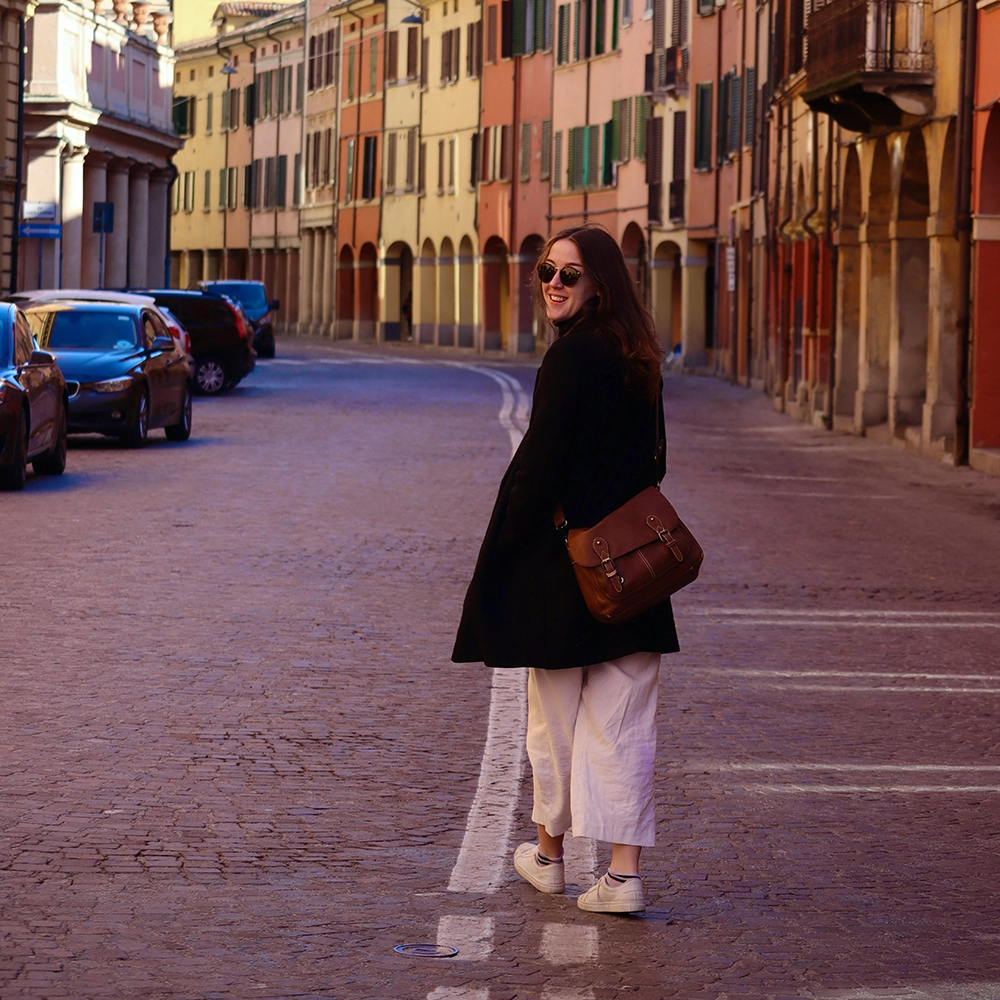Is it better to use cash or a credit card when traveling internationally? There’s a case to be made for both, but it’s always a good idea to have at least some of the local currency with you at all times.
Electronic methods could fail, either because your bank deactivated your card due to “suspicious” foreign transactions or a store’s machine just isn’t working that day. Maybe your credit card has high foreign fees you’d rather not pay, or the little roadside stand doesn’t take credit cards.
While you don’t want to carry huge wads of cash around for safety reasons, having some money in your pocket for convenience, tips, and emergencies is always a good idea. Here are our top 10 tips for the best ways to carry money — safely and securely — while traveling.
Our Top 10 Tips for How to Travel with Cash Safely
1. Exchange currency at a local bank before departure.
Getting some local currency before you leave home has a few advantages. For starters, you might be able to avoid the high currency conversion fees on arrival. The highest fees tend to be at airports, where most people make their first transaction.
I also like getting some money at home when I know I’ll be jetlagged or distracted on arrival. Not having to think about where I’ll get some immediate cash is one less thing on my mind when I’m also trying to collect my luggage, find my ride, and navigate an unfamiliar place.
Don’t wait until the last minute if you do decide to withdraw money at home. Some banks, especially smaller branches or outside major cities, won’t have foreign currency on hand. They can get it for you, but they’ll need advanced notice.
2. Choose “local currency” at foreign banks.
Once you’re at your destination, if you need to withdraw cash from an ATM or at the bank, you’ll have two options. The bank (or store if you’re using a credit card) might ask if you want to be charged in your home currency or the local currency. In most situations, you’ll save money by choosing local currency.
If you choose your home currency, most ATMs charge a Dynamic Currency Conversion (DCC) fee. It’s basically a convenience fee for showing you what you’ll be charged on your credit card without you having to do the work yourself.
On the other hand, if you choose local currency, you might still have a nominal fee from your bank, but you won’t also have the DCC charge, ultimately giving you more bang for your buck.
3. Store emergency cash in different places.
If your wallet is stolen or you lose your bag — and all your money is in that wallet or bag — you'll be left with nothing. No one wants to lose their cash, but if you do, it’s better to lose only some of it rather than everything.
Stash money in different places so you always have a backup somewhere. Spread it out between places like your purse or daypack, a money belt, your toiletry kit, or your hotel safe. Just remember where you’ve put it so that you don’t accidentally leave some behind.
4. Carry smaller bills.
You wouldn’t flash a $100 bill to buy a coffee in the U.S., so why do it in another country? By using smaller denominations, you can stay more discreet and not call attention to yourself (and your so-called wealth) unnecessarily. Make would-be thieves think twice; don’t let them see your larger bills and mark you as a prime target.
5. Learn what the money looks like.
Being familiar with what the currency looks like can also help you stay discreet. Pawing through your wallet and trying to look at each individual bill or coin marks you as an outsider and potentially an easy target for pickpockets and scammers.
For example, before starting on your adventure, it can help to know that the grayish euro is a five, the red is a 10, and 20s are blue. Some cash will be easier to decipher than others, so do the best you can. And whatever you do, don’t just hand the store clerk a wad of money and tell them to take what they need.
6. Use a money belt for backup cash.
A hidden pouch or money belt under your clothes is a great way to deter pickpockets. There are two tricks to keeping this budget travel hack effective.
First, wear your money belt under loose-fitting clothing. If people can see the outline of your pouch, it’s no longer hidden, somewhat defeating its purpose.
Second, don’t carry all your money in the pouch. Keep some of your currency in your wallet like you normally would. (And keep the wallet in a front pants pocket or secure purse.) When you want to purchase something, you can access the normal wallet quickly and easily without drawing a bunch of attention to yourself.
If you keep all your money in the hidden pouch, you’ll end up spending a lot of awkward time trying to get under your own clothes just to pay for lunch or a souvenir. Nothing screams “tourist!” like clumsily trying to access a money belt in a store line. When the money in your regular wallet runs out, excuse yourself to the restroom or some other private place and replenish it from your under-clothes money pouch.
7. Use a bag with thick straps and good zippers.
Sling bags are a popular choice. You can easily carry them tight under your arm or on the front of your body rather than on your back where you won’t see a pickpocket nosing around your stuff. Regardless of the type of bag, however, make sure it has thick straps. Some companies even make travel bags with reinforced straps that are virtually impossible to cut through, keeping bag snatchers at bay.
8. Carry different wallets for different countries.
For multi-country trips where you have to switch back and forth between currencies — like on the Swiss/European Union border — pack different wallets. One wallet is only for euros, for example, and the other is only for Swiss francs. This helps you manage your travel budget more wisely, not to mention it’s just easier when you’re trying to pay quickly for that delicious croissant.
9. Know Customs regulations for carrying cash.
This probably isn’t a concern for most vacationers, but it’s still a good idea to know the general rules for how much money you’re allowed to carry across international borders. When traveling to and from the U.S., for example, you must report to Customs and Border Protection if you have more than $10,000 with you. Other countries may have similar regulations, so do your research before leaving home.
It’s also worth noting that some countries may accept U.S. dollars but only if they were printed within a certain timeframe and are in good condition. Seven Corners’ Luke Armstrong found this out while trying to pay the border fee between Kenya and Uganda. His $50 bill from the U.S. was from 2006, too old for the Ugandan border officer to accept.
10. Save a bit of money after your trip.
If you think you might return to your destination again, it’s not an awful idea to keep a bit of the currency at the end of your trip. Use this to get you restarted when you come back.
I visit friends in Switzerland fairly often. I learned (the hard way) to keep some Swiss francs at the end of trip; I call it bathroom money because I inevitably need change to use the pay restroom in the train station. Even if I’ve exchanged money at the airport, I have paper money, not coins for the bathroom kiosk.
By keeping a few francs at the end of the trip to bring back with me the next time, I’m not wandering around the station trying to make change, just so I can use the restroom. And trust me when I say this makes for a much more pleasant beginning to my trip.
Even if you aren’t lucky enough to have Swiss friends to put you up for weeks at a time, keeping some currency is especially helpful if you have Euros. You might not return to France, but your next trip could be Portugal or Italy. In which case, you’ll be ready to go from the start.
How Much Cash Should I Travel With?
How much cash you need is unique to each individual and destination. Things to consider include:
- How much do I typically spend or expect to spend in a day? For food? For souvenirs? For excursions like museums that have admission fees?
- What is the cost of living at my destination? You may need more cash in France than in Mexico, where the cost of living is generally lower.
- Does my credit card charge foreign transaction fees? If so, how much are these fees (it’s usually a percentage of each charge)? If your credit card or bank card has high fees, it may make more sense to pay with cash more often.
- Does my destination accept cash or card more readily? Sweden, for example, is working to become a cashless country sooner rather than later. If you’re traveling in one of these cashless societies, you’d be better served with a travel-friendly credit card.
- Are banks easily accessible? If you’ll be in more remote areas where you can’t simply run to the ATM whenever you need more money, traveling with more cash may be to your advantage.
Where Is the Best Place to Store Cash on a Plane?
Keep your money on your person or in the bag that will go under the seat in front of you. While someone who steals money out of your bag in the overhead bin won’t get very far right away, it may be some time before you realize something is missing. In which case, it’s probably too late to do anything about it. This is why it’s best to keep your money close to you rather than in the overhead compartment.
Can I Keep Cash in My Pockets through TSA?
No. TSA agents will ask that you remove everything, even a half-used tissue, from your pockets before going through metal detectors and scanners. Especially if you have coins in your pocket, you will get flagged for further search.
If you’re concerned about leaving a wallet out in plain sight, put it in an inside pocket of your bag before sending it through the scanners.
How Do You Declare Cash at the Airport?
If you are entering or leaving the U.S. with $10,000 or more, you will need to declare that money to Customs and Border Protection. U.S. citizens should complete a Currency Reporting Form (FinCen 105) either online or via paper form that you’ll present to the officer at the airport. International travelers entering the U.S. should complete the Form FinCen 105 as well as CBP Form 6059B.
Protect Your Money and More with Travel Insurance
You know the importance of protecting your money and taking safety precautions when you travel. Take the next step by purchasing travel insurance, which covers the money you spent for your trip in the face of unexpected events like cancellations and delays, lost or stolen belongs, and medical expenses if you get sick or hurt during your trip. Get a quote online or talk to a licensed agent to find the best plan for you.




